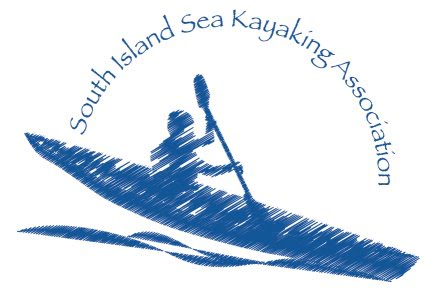
Siska October 2024 Newsletter
View In Browser
Table Of Contents
Introduction
Thanks to those members who contributed photos and materials. After enjoying a SISKA event or paddle, please consider sending a short (100-150 words) summary article; for more information, contact one of us, newsletter@siska.ca . If you would like to start a regular column, please let us know!
Jane Jacek (SISKA president) and Tony Playfair (editor)
Convenient Links
PS: SISKA on Facebook
PPS: Siska’s Youtube Channel
PPPS: Siska’s Newsletter Archive - Mailchimp or Siska Newsletters Backup
PPPPS: Rocky Point Demolition Blasting Notices
Upcoming SISKA Events
Saturday, October 05th, 2024 - 9:30 AM to 3:30 PM - Relaxed Paddle - Agate Lane to Margaret Bay Paddle
Sunday, October 06th, 2024 - 9:30 AM to 3:30 PM - Energizer Paddle - Maple Bay Rowing Club to Burgoyne Bay Paddle
Saturday, October 19th, 2024 - 9:30 AM to 3:30 PM - Energizer Paddle - Oak Bay Marina to Gonzales Beach via Trial Island Paddle
Sunday, October 20th, 2024 - 9:30 AM to 3:30 PM - Relaxed Paddle - marika Beach to NEW MEMBERS Fisgard Light Paddle
Sunday, October 27th, 2024 - 9:30 AM to 3:30 PM - Energizer Paddle - Swartz Bay/Barnacle Road Public Dock to Fulford Harbour one way Paddle
Saturday, November 02nd, 2024 - 9:30 AM to 3:30 PM - Energizer Paddle - Spirit Bay to Cabin Point Paddle
Sunday, November 03rd, 2024 - 8:30 AM to 2:30 PM - Energizer Paddle - Telegraph Cove to Discovery Island Paddle
Saturday, November 16th, 2024 - 9:30 AM to 3:30 PM - Energizer Paddle - Oak Bay Marina to Gonzales Beach via Trial Island Paddle
Saturday, November 16th, 2024 - 9:30 AM to 3:30 PM - Relaxed Paddle - Cadboro Bay to Oak Bay Marina Paddle
Sunday, November 17th, 2024 - 9:30 AM to 3:30 PM - Relaxed Paddle - Telegraph Cove to Willows Beach Paddle
Upcoming NON-Siska Events
by Rod Stiebel
Chart and Compass Navigation Course by Go Kayak
This course is put on by Go Kayak, with both Yves Aquin and Patti Stevens. This is “chart and compass” course for navigation over 2 sessions. Note that it will not cover any electronic navigation, that is a separate course.
The first session will be a classroom setting at night during the week, then the On Water session (optional, but you must have done the classroom session) would be the following weekend.
The classroom session is at their place in Victoria, and the On Water sessions will be at a suitable local launch site.
Classroom session will be 3 plus hours, and will include, (once registered) access in advance to on-line material to be used on the course. The earlier you register, the longer you will have to go over the material before the first night.
On Water session will be around 3- 4 hours (location TBD).
The minimum is 4 registrants, with a maximum of 8 per session.
Course dates are:
Classroom session: Tuesday Nov 19. Following On Water Session Saturday Nov 23
If there is demand, an added course is for the following dates:
Classroom session: Wednesday Nov 20. Following On Water Session Sunday Nov 24
See PDF for further details and costs.
Once you have registered, you will be sent a link for the On Line material.
Send your request to register at info@gokayak.ca put SISKA Chart and Compass Course in subject line. They will then send you back more info for payment and more.
BestCoast Guest Speaker Event - October 10
by Jane Jacek
We’re beyond excited to invite SISKA members to our upcoming guest speaker event on the fascinating “History of Sea Kayaking.” Our speaker, David Johnston, is travelling all the way from Ontario to guide us through the evolution of modern sea kayaking.
This free event will take place on October 10th at 7 PM at our store, located at 865 Yates Street, Victoria. To confirm attendance, we kindly ask that members RSVP by sending an email to sales@bestcoastoutfitters.com.
For more information about the event please check the PDF.
Thank you for your continued support and looking forward to seeing you there!
Warm regards,
Ali Torabidavan
Communications Assistant
Siska October 23rd General Meeting Agenda
by Fred Pishalski
Snorkelling Adventures Around Vancouver Island and The Gulf Islands
by Dr Sara Ellison, PhD Professor, Department of Physics & Astronomy, University of Victoria
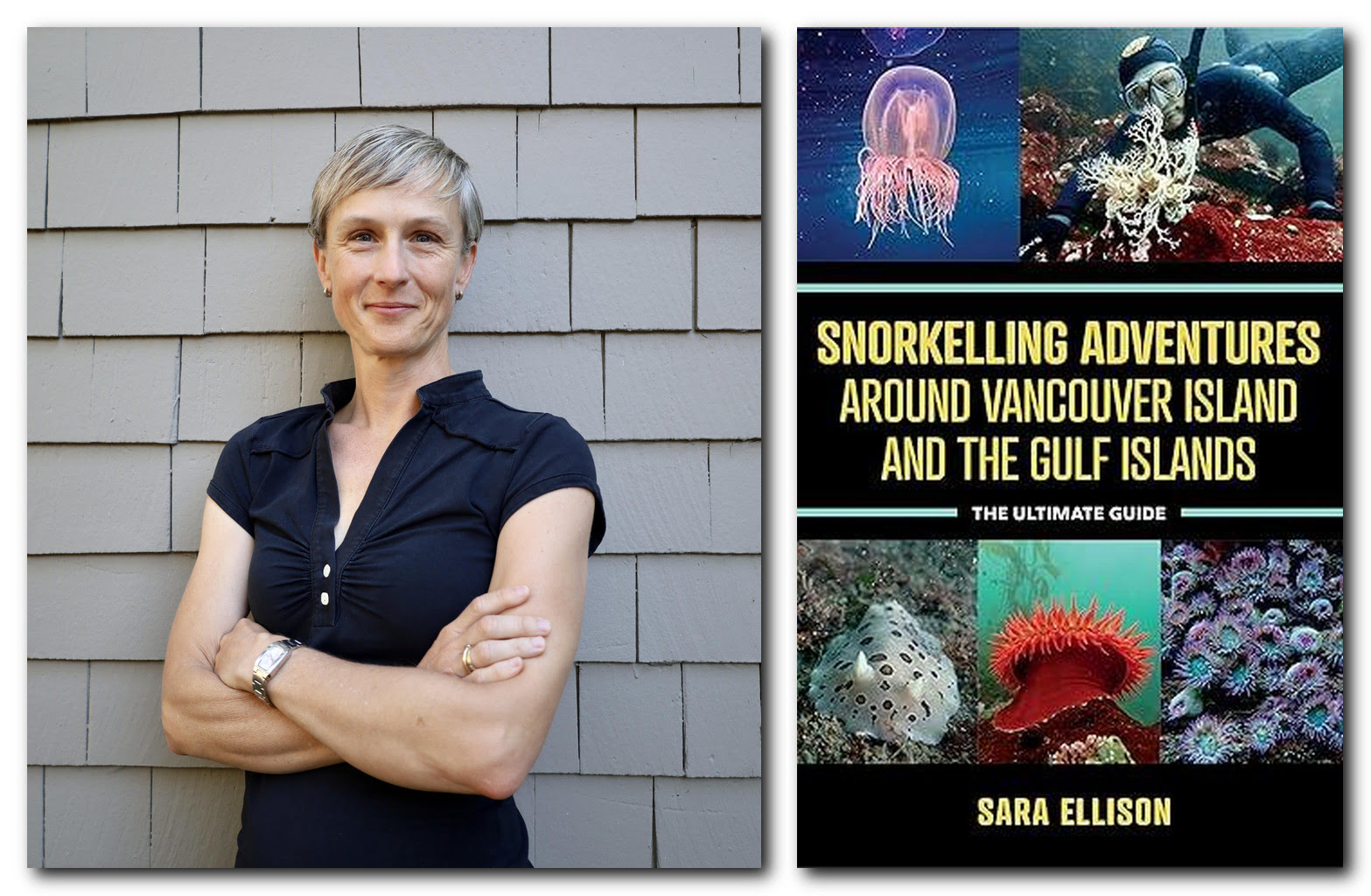
The chilly waters of the Pacific Northwest might not be top of your snorkelling bucket list, but our oceans are chockfull of stunning wildlife. Here, you can find some 30 species of seastars, giant anemones, fabulously coloured nudibranchs and of course the giant Pacific octopus. Although BC is a well known scuba diving location, it is less appreciated that the vast majority of these species can be found in the inter-tidal and shallow sub-tidal zones that are accessible to snorkellers. In this talk I will share my adventures and experiences, explaining the gear you need, the kinds of critters you will see and my personal top picks for places to go to see our wondrous wildlife (with a focus on locations that make excellent kayak trips!).
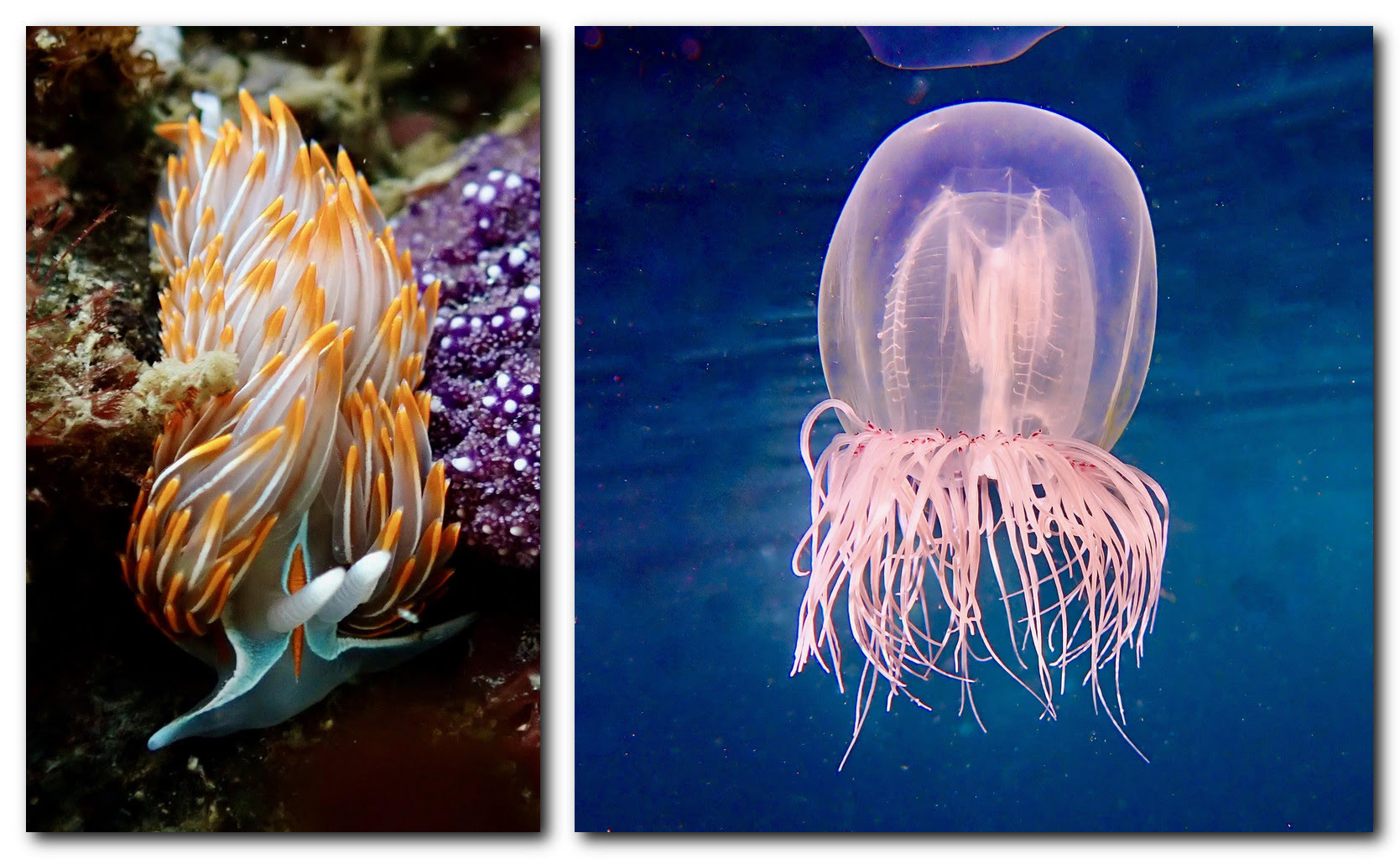
Sara Ellison received her PhD in astronomy from the University of Cambridge. After spending three years doing astronomy research at the European Southern Observatory in Chile, she moved to the University of Victoria to take up a Canada Research Chair. Sara is an international leader in the field of galaxy evolution, with numerous honours and awards to her name, including the Rutherford Memorial Medal in Physics from the Royal Society of Canada. She is also a keen athlete and world traveller, but having snorkelled all around the world, BC is her favourite place to go for a swim! In 2023, Sara published “Snorkelling Adventures Around Vancouver Island and the Gulf Islands: The Ultimate Guide”, which was a #1 bestseller on the BC booklist for several weeks, as well as a best-seller on Amazon. Her underwater work has been featured in many venues including CBC and Canadian Geographic.
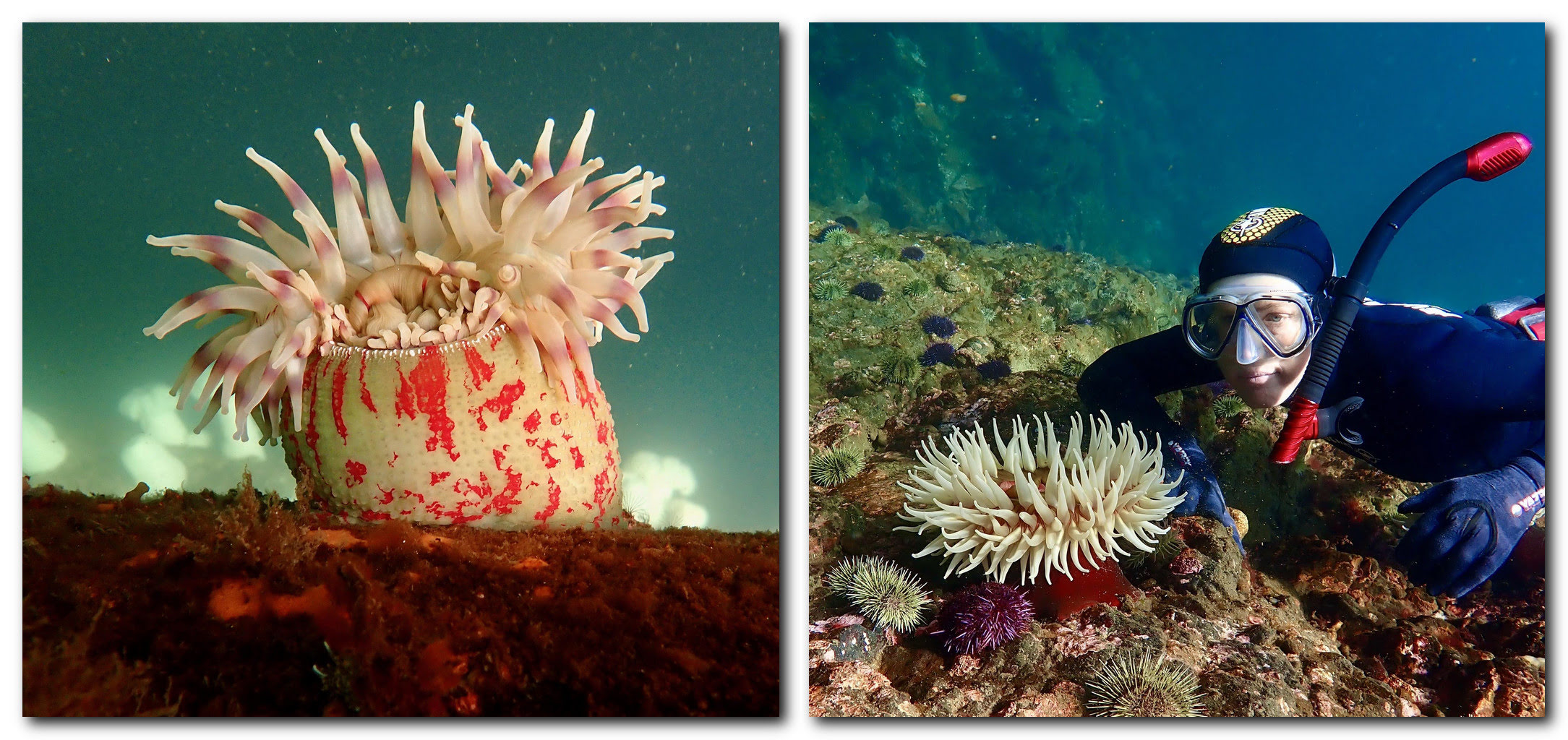
So come and find out how an Astronomy Professor from U of Vic who studies quasar absorption lines and galaxy evolution as a function of an environment, turned into a published author on snorkelling West Coast Waters.
Our meetings start at 7:00pm however, folks that have gear they wish to sell/swap are invited to show up at 6:00pm to set up, doors open for everyone at 6:30pm. We meet at the Garth Homer Centre, 831 Darwin Avenue, off Saanich Road, near Saanich Municipal Hall.
We are pleased to meet in-person in the Garth Homer Centre’s spacious auditorium, 813 Darwin Ave, Victoria.
PLEASE NOTE:
In keeping with the latest BC public health guidance on Covid-19 and other respiratory illnesses currently circulating in the community, face coverings are not required for indoor meetings and events like this.
Members are welcome to wear a mask if they wish to do so. Masks and hand sanitizer will be available at the rear of the auditorium near the refreshment counter.
For those who are feeling unwell, uncomfortable with indoor meetings or otherwise unable to attend, the presentation will be posted to our YouTube channel following the event.
So Where is the Garth Homer Centre?
831 Darwin Avenue, off Saanich Road, near Saanich Municipal Hall.
Parking is available beside the building once you pull into the entrance off Darwin Avenue.
It is very close to the Lochside Trail which crosses Darwin Avenue close to nearby Saanich City Hall. The nearest bus stop is at Saanich City Hall on Blanshard Street.
Siska Trip Reports
Broken Islands Paddle Report, September 2024
by Evon C.
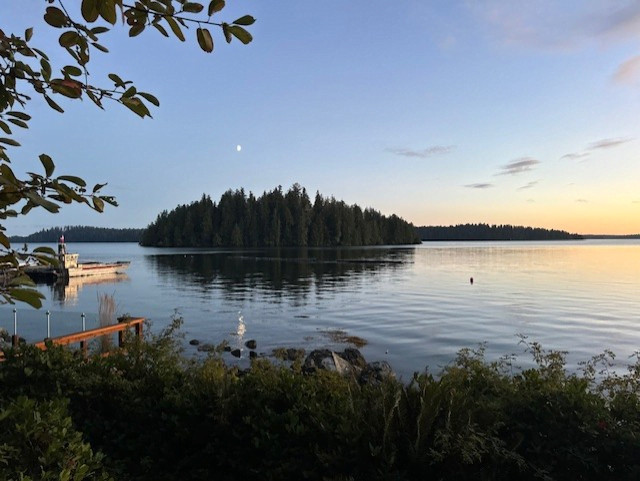
View from the lodge
During the second week of September, 27 SISKA members headed to the Broken Group Islands, a group of small islands and islets in the middle of Barkley Sound on the West Coast of Vancouver Island. The group is protected as the Broken Islands Group Unit of the Pacific Rim National Park Reserve. We disembarked from Secret Beach where 13 SISKA members took the water taxi and 14 paddled to the Broken Islands lodge where our 5-day adventure was based. There are many lovely camp sites within the Broken Group Islands; however, staying at the lodge is like being on a retreat. There is nothing like soaking one’s body in a wood fired hot tub with views of the distant islands or spotting a momma bear and cubs strolling along the beach just meters away after a day exploring the islands and sharing the days adventures with fellow paddlers. Guests are well taken care of with clean rooms, cooked buffet breakfast, packed lunch with soup and buffet dinner. There is even a drying room for your wet gear!
There were four paddles per day going to the inner, middle or outer islands, and the route varied daily, each led by experienced and expert paddle leaders. After dinner, the paddle leaders review the days paddle on the chart and stories are told about the adventure, and the following days paddles are presented. Picking up on the excitement of stories told, paddlers can decide where they would like to go the following day in search of fish traps, the face, caves, totems, or even a steam donkey! Even though the steam donkey was not found, the walk through the moss-covered forest on Hand Island was a fun adventure. Many groups delighted in finding the “Giant Tree”, a mish mosh of several trees joining together into bizarre and wonderful shapes where one’s imagination can run wild as to what you see.
It was a fun group who did not mind getting teased. One leader, ready to launch from the kayak launch, called out, “Has anyone seen my chart? I just had it!” Holding a chart in his hand, he proceeded to get out of his kayak and wander around the dock looking for his chart. A radio call was made to his group, where someone responded, “Is it in his hand?” The member looked at his hand and there it was! A great story for the evenings review!
After a very engaging discussion on navigation by Edgar, the very next day, 4 paddle leaders and their group were dropped off at the outer islands by the water taxi, where, after a short paddle, they realized that they were not where they thought they were. Not lost, just temporarily disoriented. Using their combined skills, they realized where they were. Edgar’s advice on 3 things essential to navigation, compass, chart and time (watch) were used by many of the group in the days that followed. SISKA members love to share their knowledge. As well as the navigation talk, Edgar also led a paddling in currents and VHF radio interactive session.
Taking a bio break within lush forests or taking in sweeping ocean views is pretty cool; however, two of our members realized that they were being recorded on a wildlife camera while they were relieving themselves. Someone, somewhere, is going to see more than they bargained for!
Folks who have electric vehicles and no spare tire might want to consider what it would be like stranded on a rocky dirt road with a shredded tire, no cell service, a water taxi to catch and a kayak to transport! With a lot of organization, the situation was resolved but not without a fair amount of stress on the SISKA member.
We had so many memorable experiences. Chatting at dinner one night, the resident large male black bear proceeds to walk past the dining room window, stop at the lawn to munch on the grass, walk around the hot tub, go for a swim in the ocean, climb out onto the beach and finish his dinner. If the hot tub was not closed, I wouldn’t have been surprised if he had climbed in for a soak!
Amongst the most memorable moments were ones where we simply stayed still and silent in our kayaks while soaking up the full beauty of this remote west coast treasure while perhaps trying to imagine what it was like for the Tseshaht First Peoples years ago. Tseshaht translates as “people of a rancid smelly place” because the inhabitants were such great whalers and their village reeked of whale oil, signifying great wealth. Benson Island is believed to be where the Tseshaht ancestors were granted responsibility and stewardship of the Broken Group Islands by their creator (n’aas), a responsibility now taken over by the National Park, allowing adventurous souls access to enjoying this majestic area.
Whether exploring misty shorelines in search of intertidal life, paddling through twisted ancient trees clinging to dramatic cliffs, checking out caves, encountering wildlife such as grey whales, slithering garter snakes, eagles, sea lions, seals, octopus, a lone wolf, listening to the haunting cry of loons in the misty morning or enjoying lunch on white sand beaches, each visit to this incredibly diverse area unfolds new experiences every time.
Thank you Konrad for organizing such a well planned and executed trip and the paddle leaders who kept us all safe. One more thing … we were treated to a yoga session led by Heather and assisted by Ginny. Namaste!
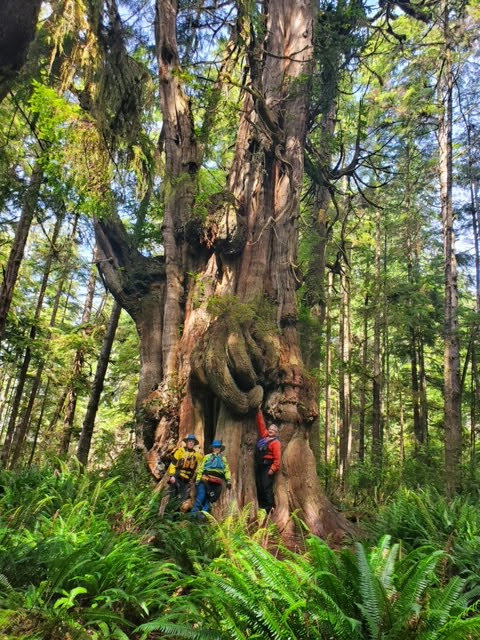
The Big Tree
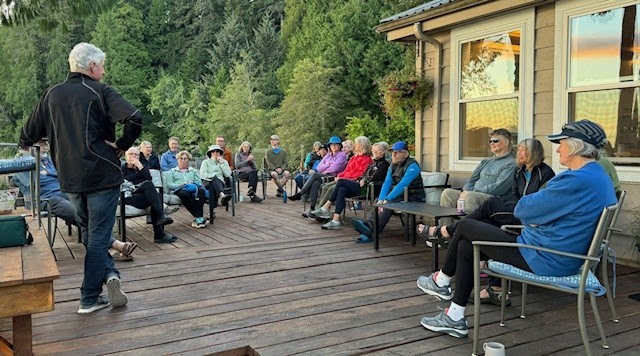
Where are we going tomorrow?

Momma bear and her cubs

Konrad and Edgar reviewing the days paddle route
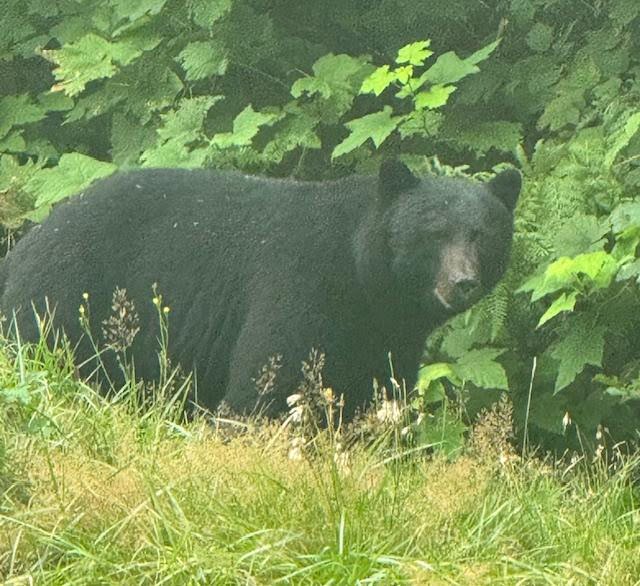
The resident large male black bear
Fleming Beach to Thetis Cove
by Marika S
Twelve kayakers launched from a very busy Fleming Beach on Saturday, Sept 7 for a relaxed RAFT UP paddle to Thetis Cove. We stopped for a quick break at Portage Park then headed over to historic Cole Island, where resident caretaker Charles was waiting to give us a tour. We took advantage of the low dock extension for exit and entry from our kayaks and nobody got wet! Trip leader Debbie tied all the kayaks up and off we went for our private tour. After the tour we returned to Thetis Cove for lunch before paddling back to Fleming Beach. It was great to meet new members and share kayak stories with the Comox paddlers.
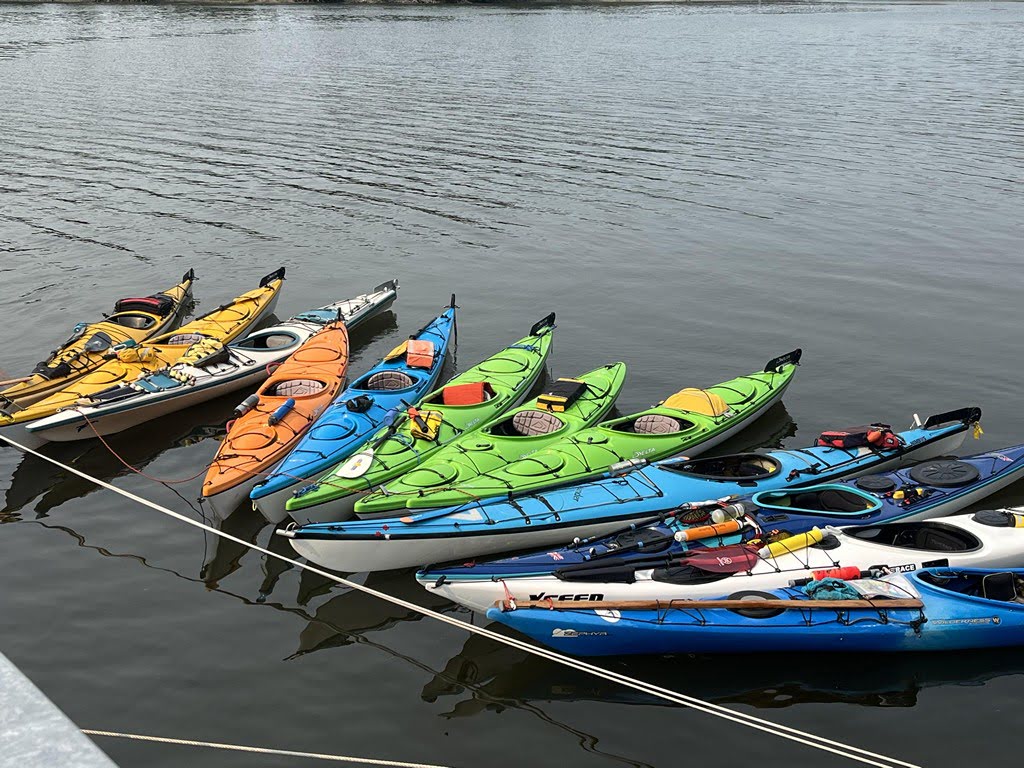
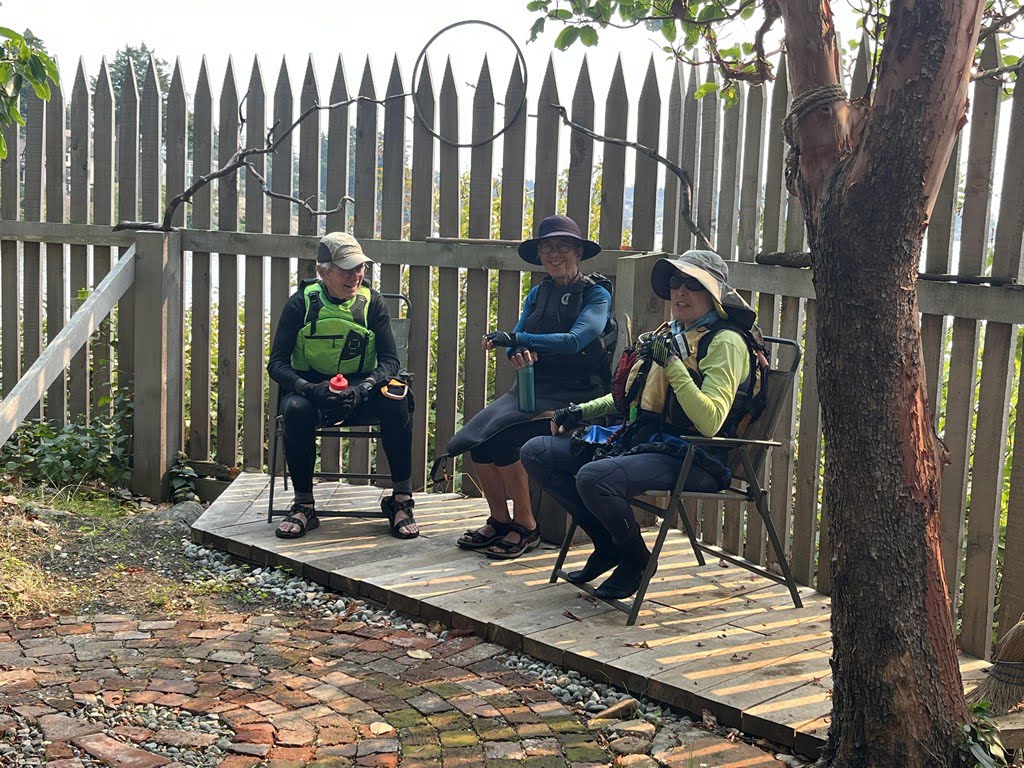
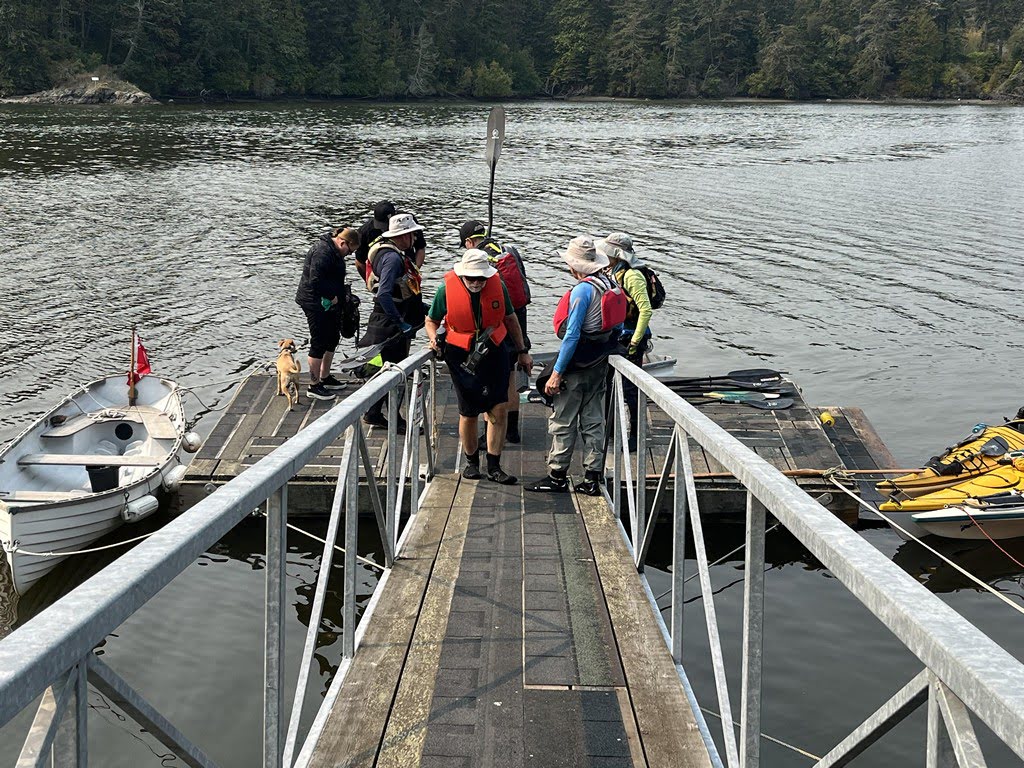
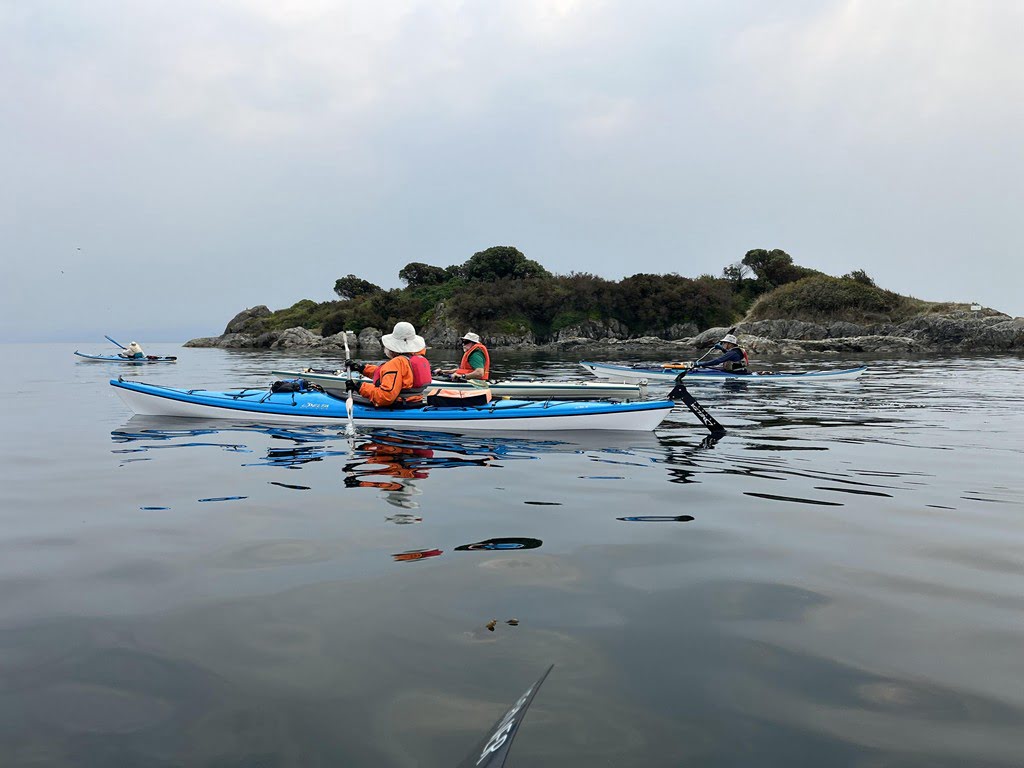
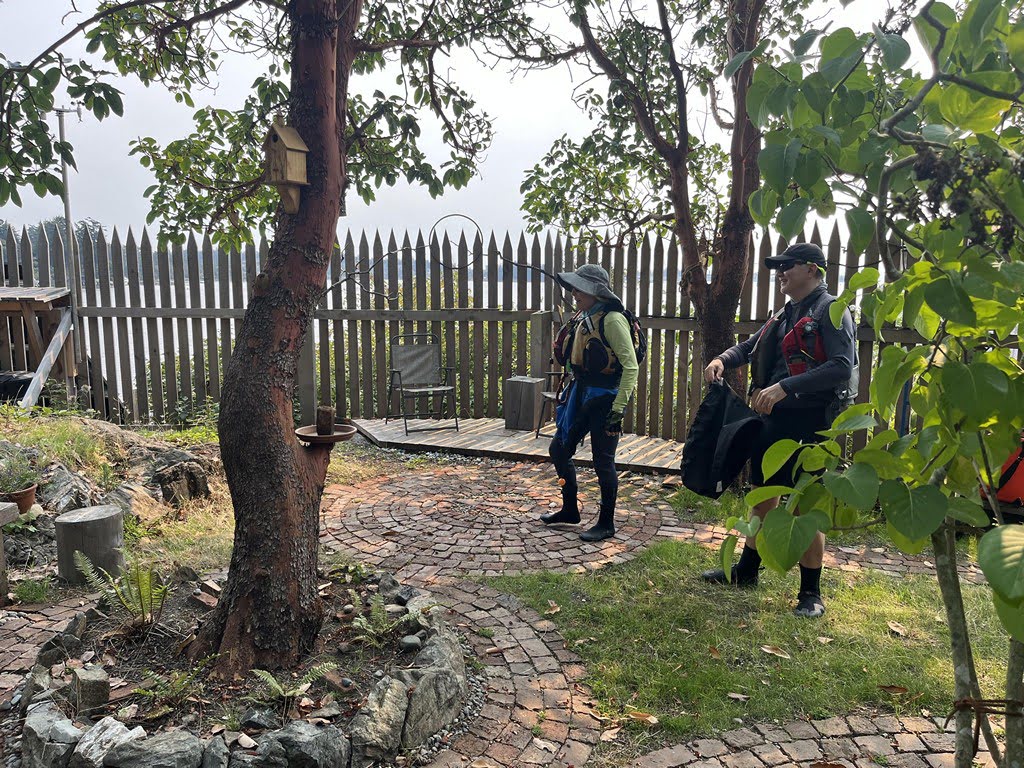
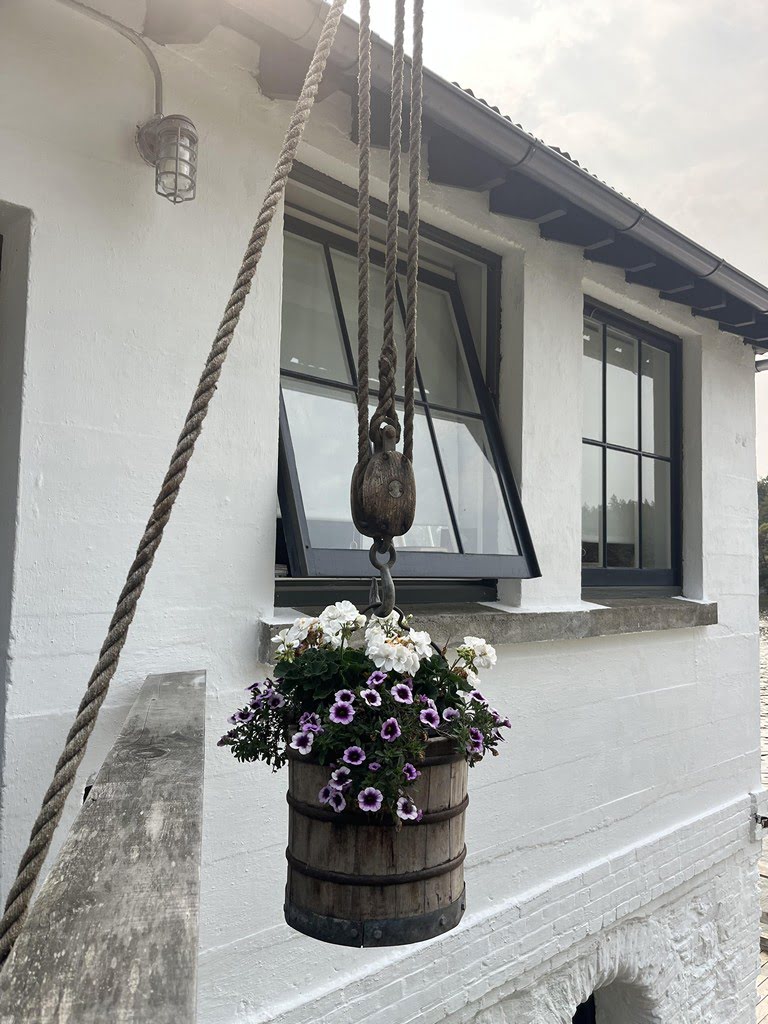

Raft-up paddle with Comox Paddlers
by Jennie Sutton
Friday, September 6th - Telegraph Cove to Chatham/Discovery Islands
Eleven of us arrived at the launch site to glassy calm seas, blue skies and sunshine.
There were four Comox paddlers, one new SISKA member and the rest were club
members. After meandering along the shoreline to 10 Mile Point with Alex Briker as
Pacesetter, we grouped up before crossing Baynes Channel to the Chatham Islands,
maxing at times at over 5 knots with the ebb current.The Comox paddlers were in
absolute awe of this beautiful location with so many islets to wander around and so
many sandy beaches to admire. We took a peak into the large lagoon but the tide
height prevented us paddling into it. At the channel between Chatham and Discovery
we turned right and picked up the ebb which carried us counter-clockwise around
Discovery Island. At Rudland Bay we had a lounging, leisurely, long lunch break. After
admiring the Takaya painting and sculpture we crossed to the channel between the two
Chathams and exited via the “slough” after exploring the smaller lagoon. The start of
the flood assisted us on our return to Telegraph Cove. A 9.5 nautical mile paddle in
ideal conditions! A few of us made time for coffee, goodies and chatting before
heading home. Most of us then carried on to the pot luck!



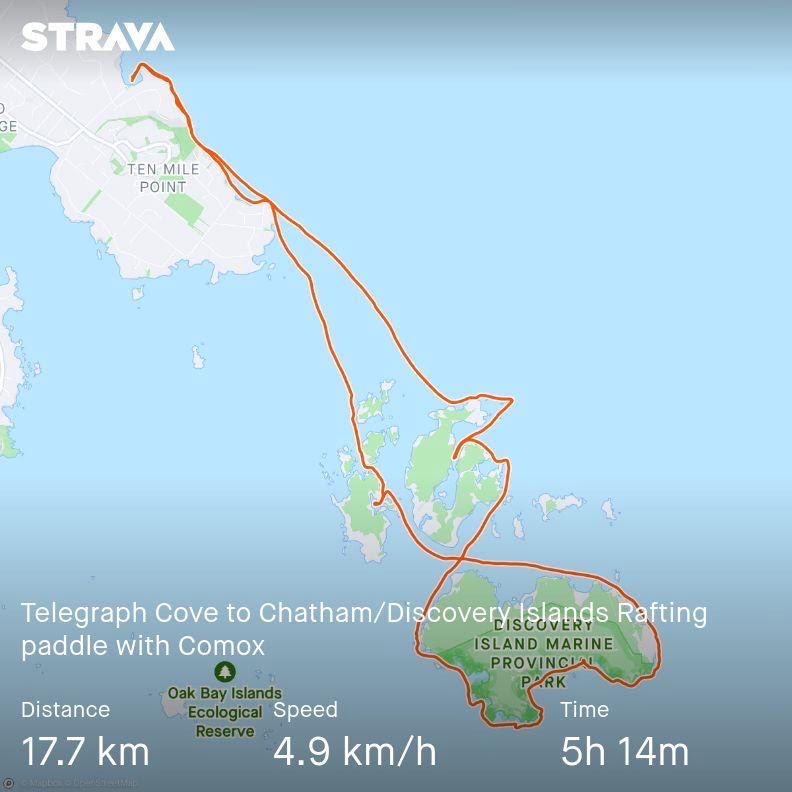
Raft Up Paddle from Pat Bay to Coles Bay - Sept 6
by Delcie McLellan
A warm sunny day for the relaxed Raft up Paddle. There were 14 of us, 4 of which were from the Comox Valley Paddlers Club…. Rob, Linda, Jan and Sandra. We noodled the shoreline past the Coast Guard docks out to Yarrow Point and into Coles Bay. Several of the group were immediately keen to jump in for a swim. The water was lovely. So a longish lunch break and more swims. Then we leisurely paddled back to the launch site. It was a very enjoyable paddle followed by a debrief at the Roost.
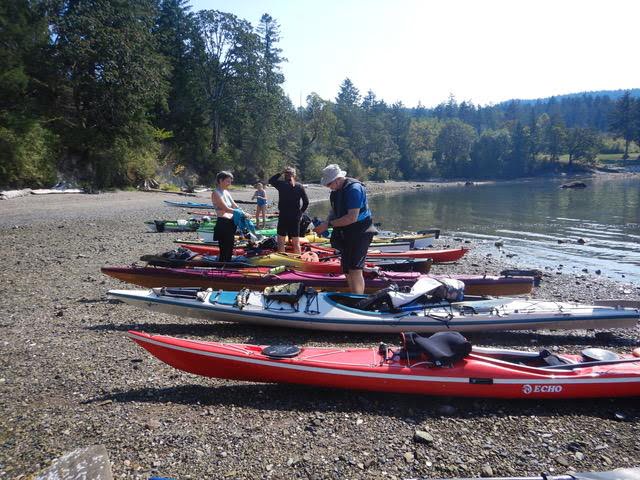
NON Siska Trip Reports
Knapp Island Shinto Shrine Visit
by Norm Smyth
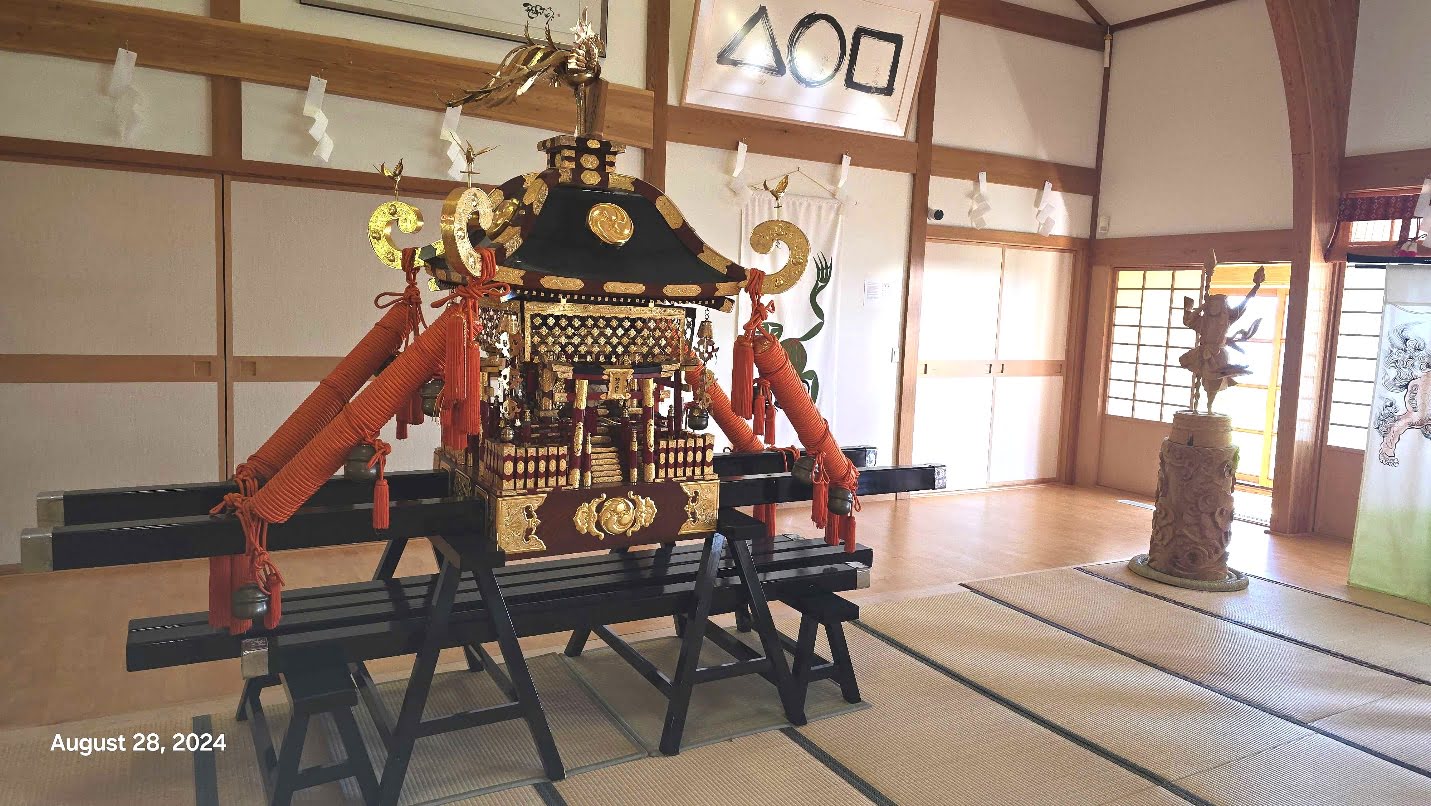
In late August eight Salish Salties spent a day on Knapp Island, visiting its Shinto Shrine and walking & meditating on its peaceful grounds. We arrived at 1130 and departed at 3 PM. After a 30 minute introduction to Shintoism and the Island by resident Reverend Ann Evans, we ate our own lunches and then explored the charm and spirituality of the island. Visitors are welcome and a $25 donation per person helps defray their expenses. Contact Rev Ann to arrange a visit at 250-656-0755. See more on the website - https://matsuri.ca
Norm Smyth
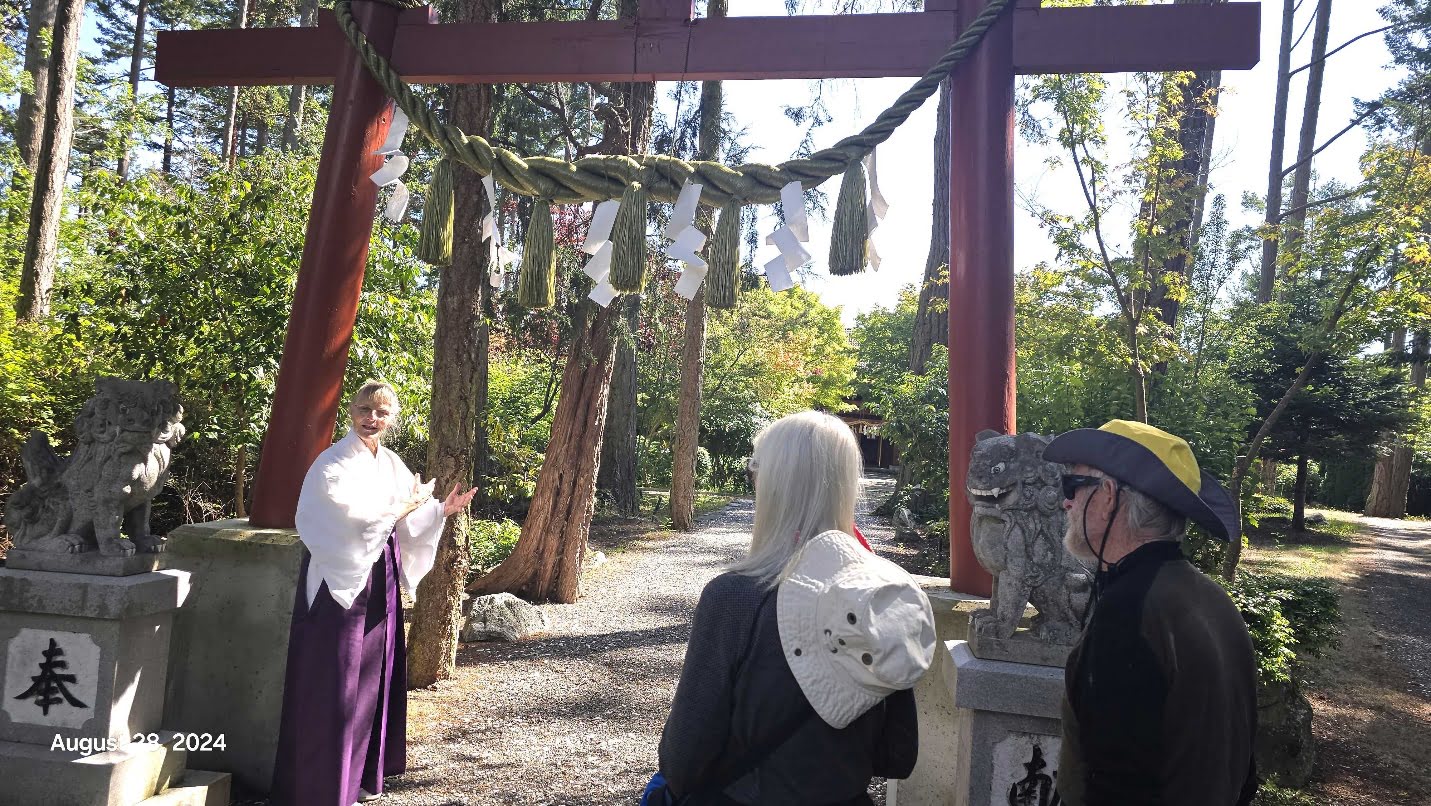

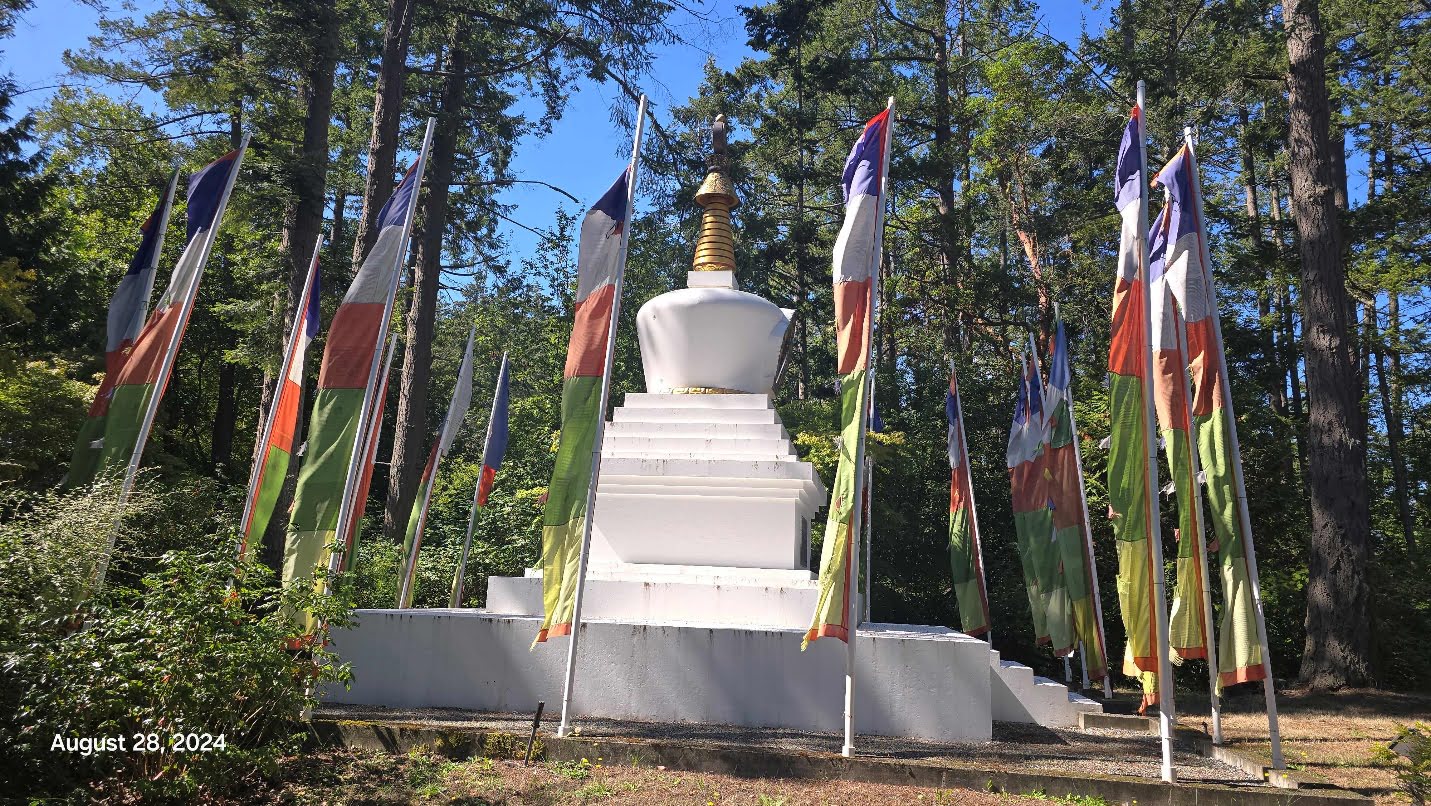
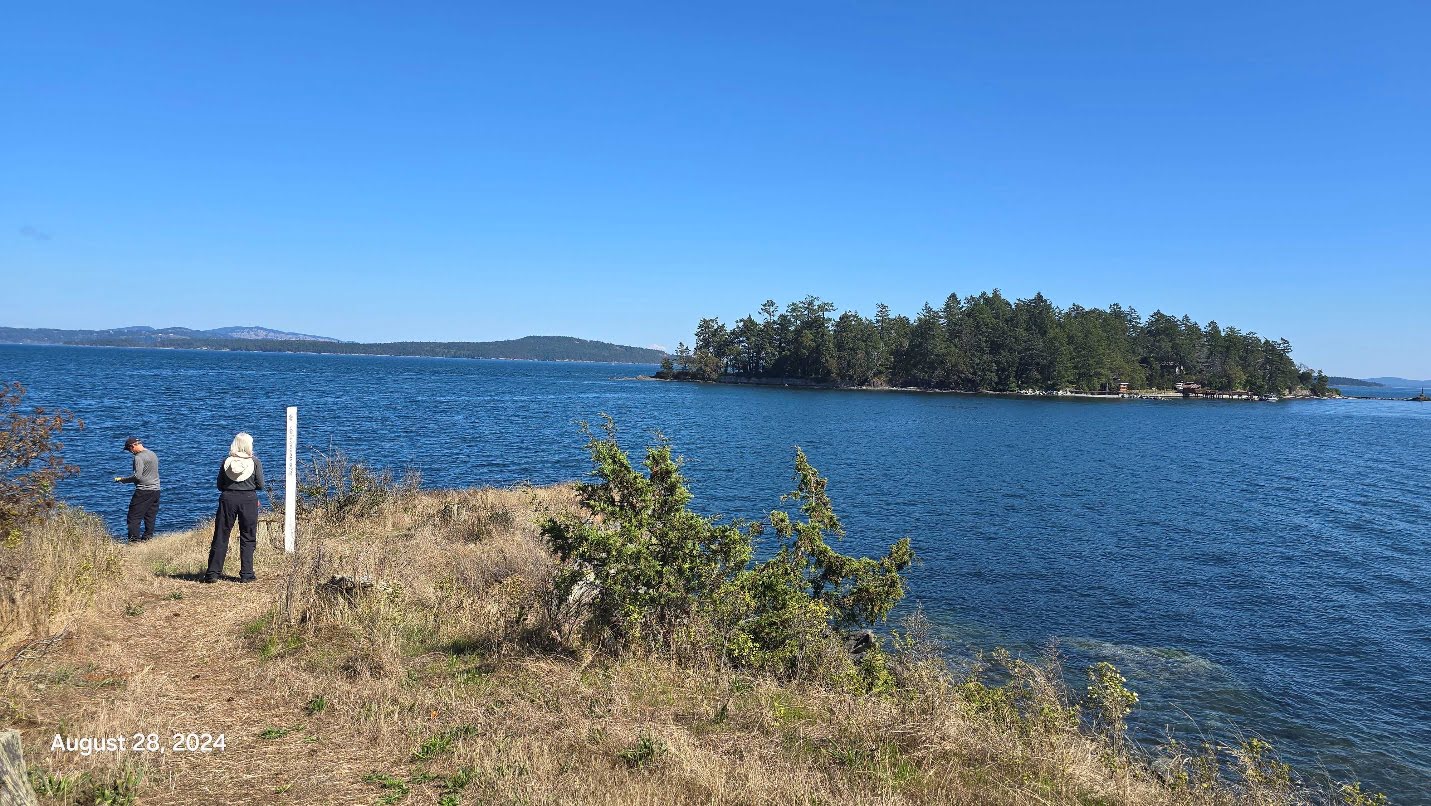
Off Water Reports
by Rod Stiebel
Seaweed Tour by Dakini Tidal Wilds with Amanda Swinimer
August 18, 2024
By Evon Soong
The tour was well organized, there was seven of us in total. Amanda was bang on time, and her instructions on where to meet were clear and easy to follow. We met at a location in town that is easy to reach, James Bay, and where many different varieties of seaweed were close at hand. The pre-workshop instructions were detailed and helpful - some were meant to keep us comfortable in case of rain and cold, but the weather was perfect that day - mild and dry. To those interested in the harvesting, use and particularly eating of seaweed, this was a fascinating workshop. Amanda described in detail seaweed physiology, reproduction and growth, and how to harvest it sustainably. She spoke about how seaweed is used around the world, its health benefits, and how it is affected by climate change. She brought samples of several different types of seaweed she had harvested locally herself, for us to look at and taste; she described how to reconstitute and use it (baths, etc.) Her knowledge and experience were impressive - she was able to answer all our questions informatively and in detail (particularly helpful was how to identify the different types of seaweed kayakers would typically encounter) and identify all the seaweed types participants picked up on the beach. After the workshop, we had an opportunity to purchase Amanda’s books and seaweed products, which are also sold commercially at Finest at Sea in James Bay. I have a new appreciation for seaweed now!!
Note from Off Water Committee: We hope to have Amanda offer another tour in the Spring, if interest is there. Her tours typically start in early April. See the link here for more info on Dakini Tidal Wilds: https://www.dakinitidalwilds.com/
Christmas Notice
by Jennie Sutton
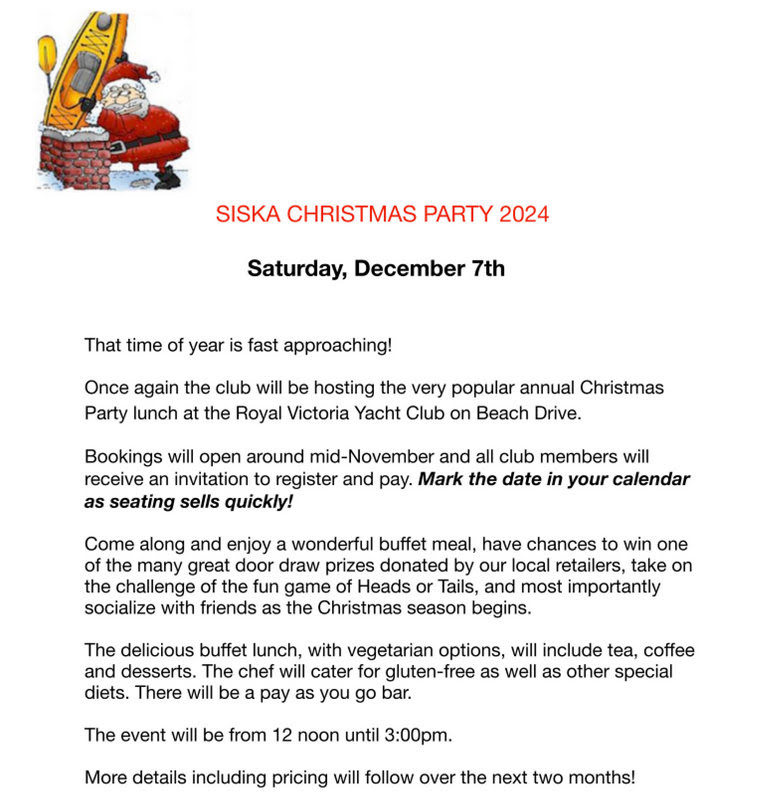
Tips From The Trips
by Debbie Leach
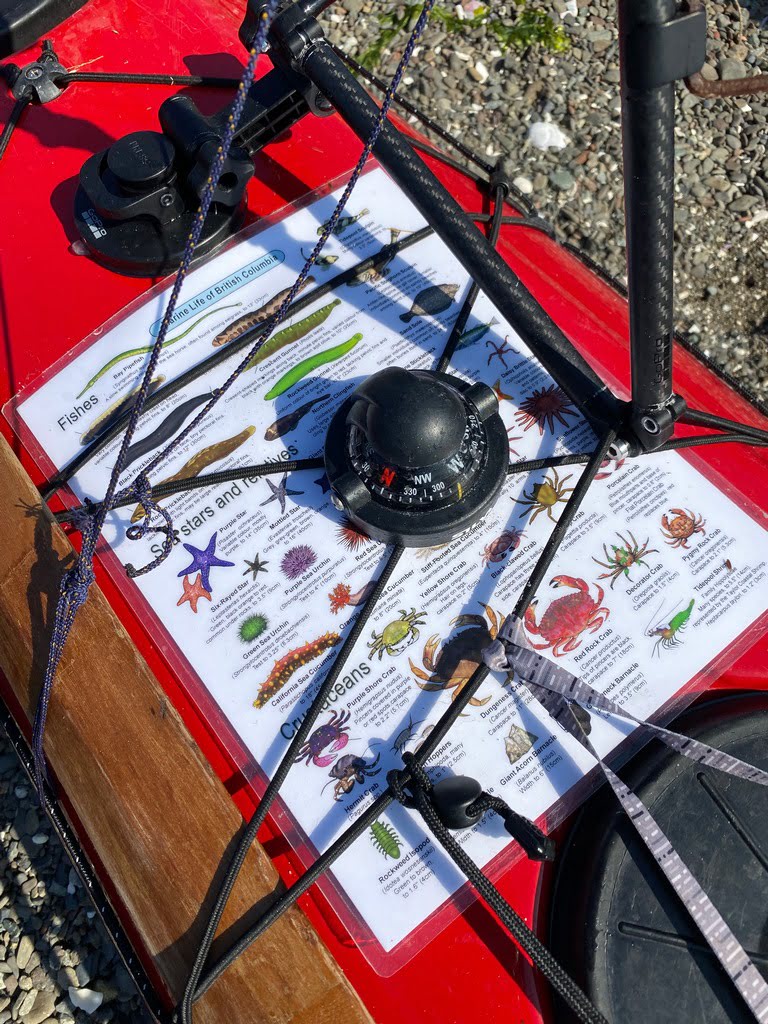
What is that? Remember to take along a marine life I.D. card or book to appreciate what you are seeing “out there”.
Camp Cookery
by Lynn Baier
Camp Dump Cake
I made a dump cake a couple of weeks ago, and thought “hey, I can adapt this for camping”. It was pretty successful and very simple to do. I don’t think you will see it on a five star menu any time soon, but it was sweet and tasty. I used a small pot which made two servings (I ate them both).
MANGO DUMP CAKE
Dehydrated mangoes, or any fruit, to cover about two slices deep in the pan.
1⁄2 cup white cake mix
1⁄4 cup butter
Cover the dehydrated fruit in water and bring to a boil. Let it sit until the fruit is soft. In the meantime, cut the butter into the white cake mix, as if you are making pastry. When the fruit is soft bring it back to a boil. There needs to be a bit of liquid in the pan. Sprinkle the cake mix/butter evenly over the top. Put the lid on and turn the burner as low as it will go. Simmer for about 10 minutes. Enjoy!
This will be a real mess in a jetboil or any stove with a directed flame. I thought I might wind up with a sticky cleanup too, but a two hour soak lifted any of the stuck on bits.
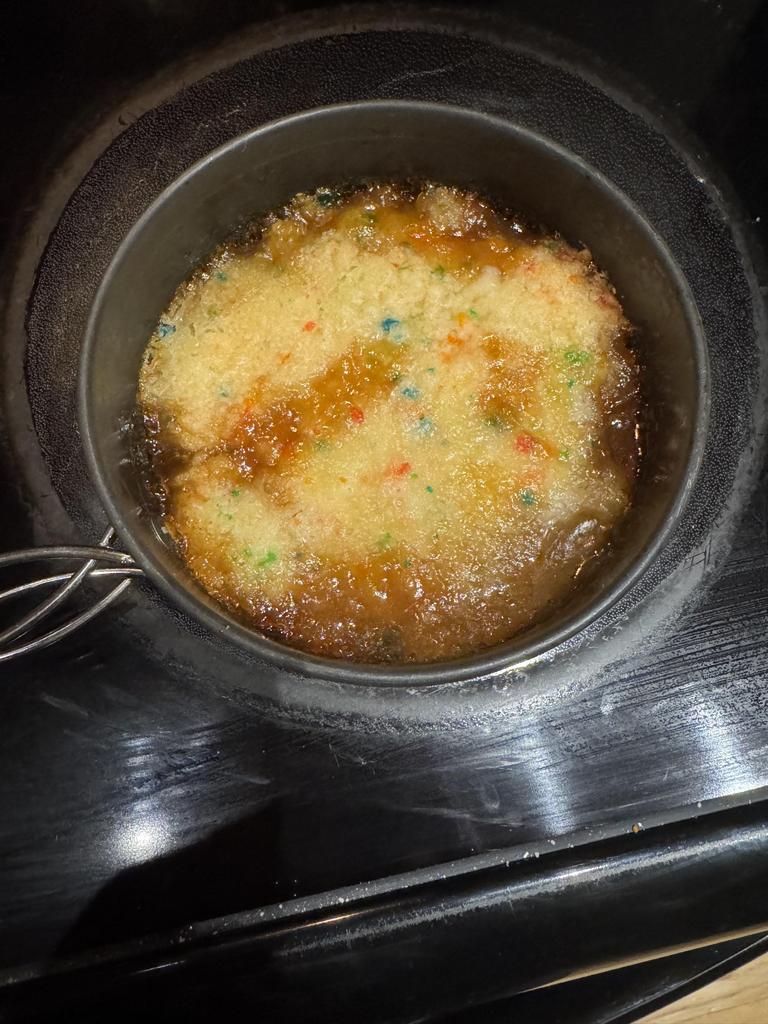
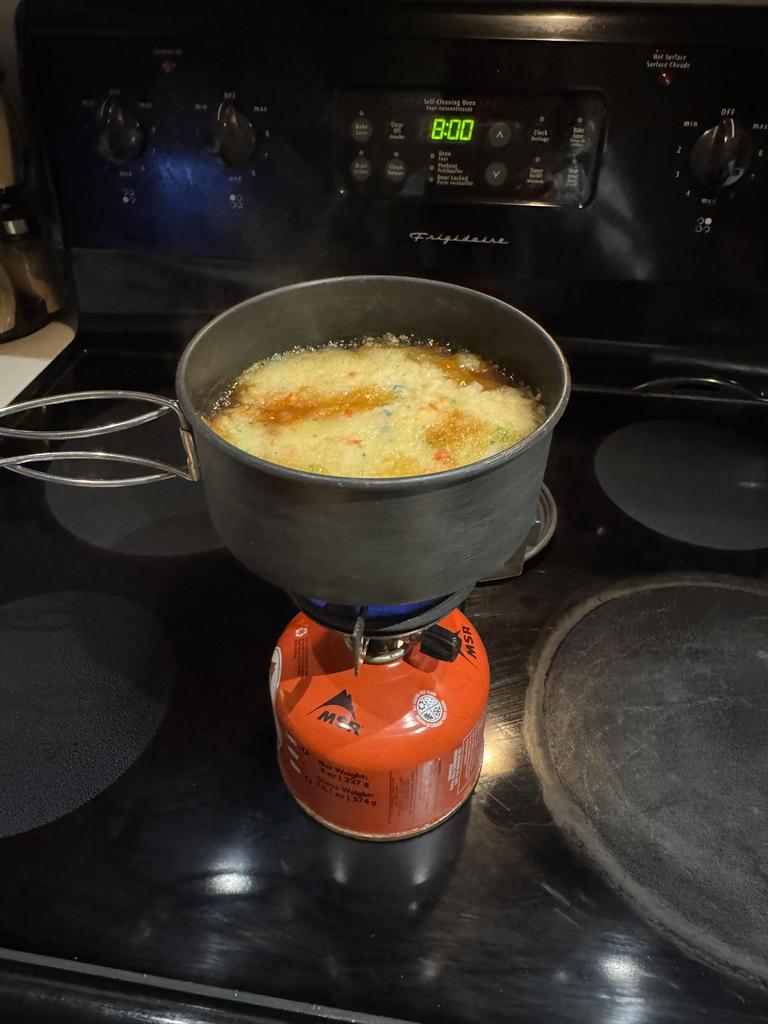
Donations to Outdoor Education Startup in Ucluelet
By Ali Morham
Looking for donations to the Outdoor Ed land based learning program that is starting at the Ucluelet Secondary School this fall run by my friend Arran Jackson. The program is in its infancy. The students come from the Pacific Rim area. They have need of outdoor clothing especially base layers, as well as any other items that you may have, old rain coats, boots, dry bags, etc…. Let me know if you have anything and I’ll come and get it. Thanks, Ali Morham
alimorham@gmail.com
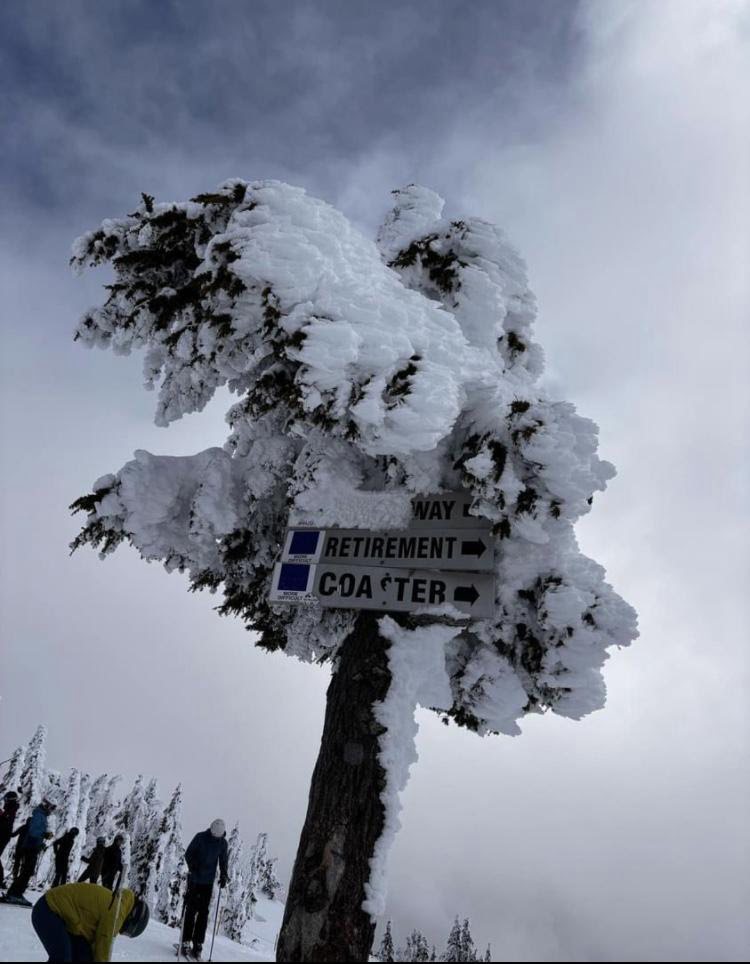

Safety Item
by Sybil Seitzinger
Satellite Communications for Emergency & Routine Communications
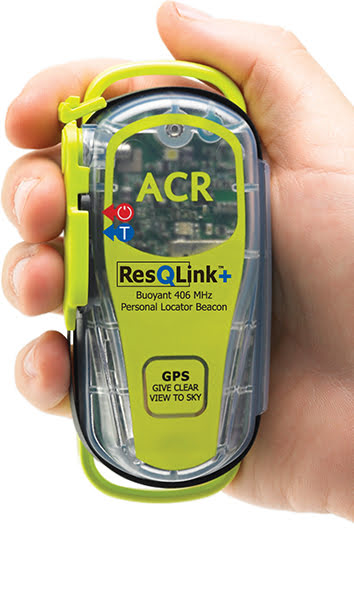
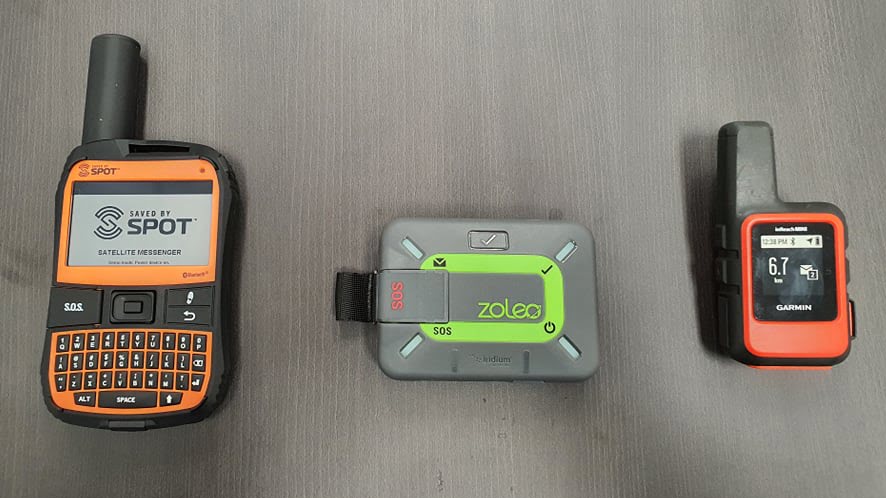
I asked the Maritime SAR Coordinators at the Joint Rescue Coordination Centre (JRCC Victoria) for their views on the various satellite communication options available to us as kayakers. The following are generalities and not meant as a comparison of brands and models.
Personal Locator Beacons (PLBs) are specifically designed for search and rescue purposes and are preferred by JRCC for emergency response. JRCC is required by law to investigate every PLB activation, which is not the case with the other satellite devices. They were once a pricey option, but that is apparently no longer the case. PLBs need to be registered but do not require a subscription, so there are no ongoing costs. They are excellent for one-way emergency alerting but cannot be used for routine contact with family.
InReach, Spot, Zoleo, etc. devices are capable of two-way communications and can be used for routine communications as well as during emergencies. Alerting of the SAR system is less direct, sometimes causing delays and therefore is not as desirable for emergency response. As helpful as the two-way communications ability may be, it can sometimes result in false reports of overdue boaters. Satellite transmission of messages is sometimes delayed, leading friends or family to think you are overdue if they don’t receive an anticipated check-in. Leaving a detailed sail plan can help prevent these false alarms. In the event of a real emergency, it can be helpful if family gives JRCC access to your track.
BC Marine Trails News
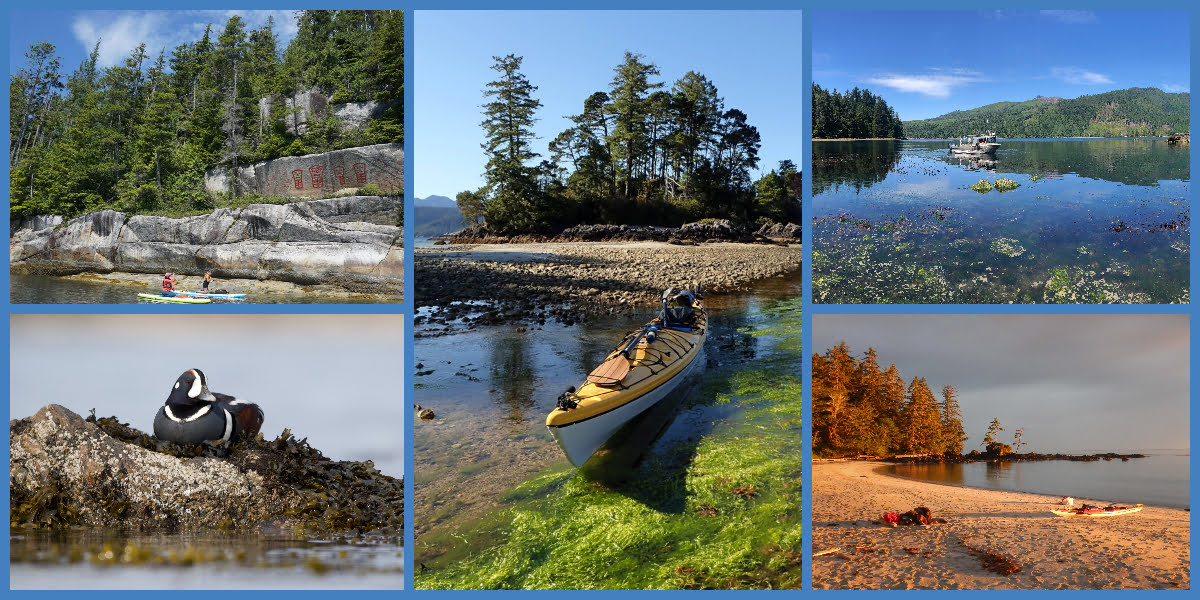
September Newsletter
SISKA’s Kayak Skills Course Partners
There are some fine discounts available from our kayak skills course partners for SISKA members who sign up for their skills training programs.
Our partners are:
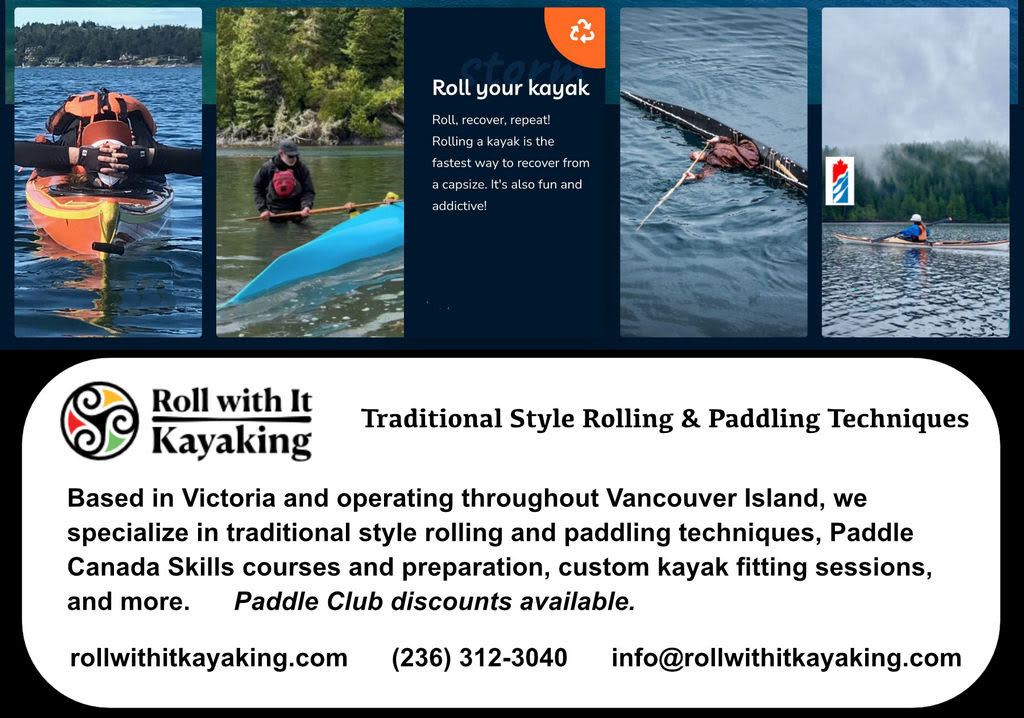
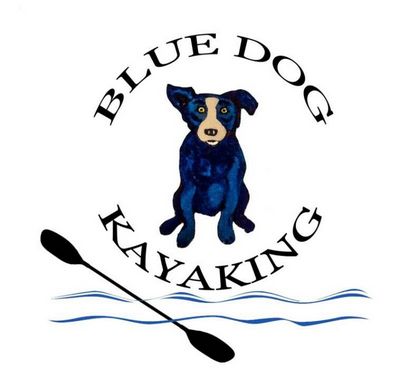
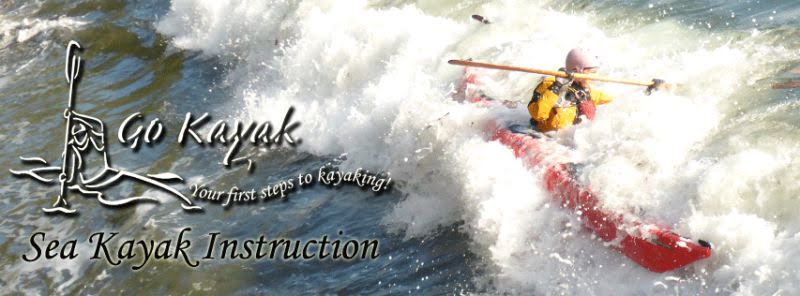

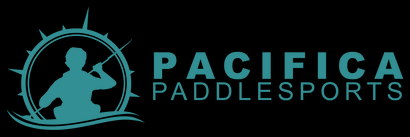

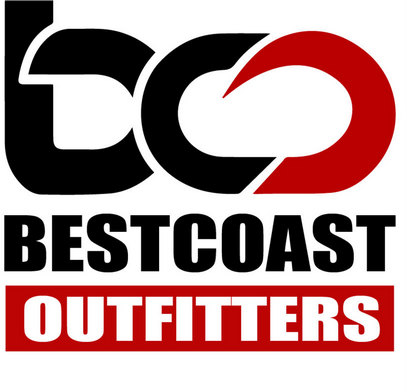
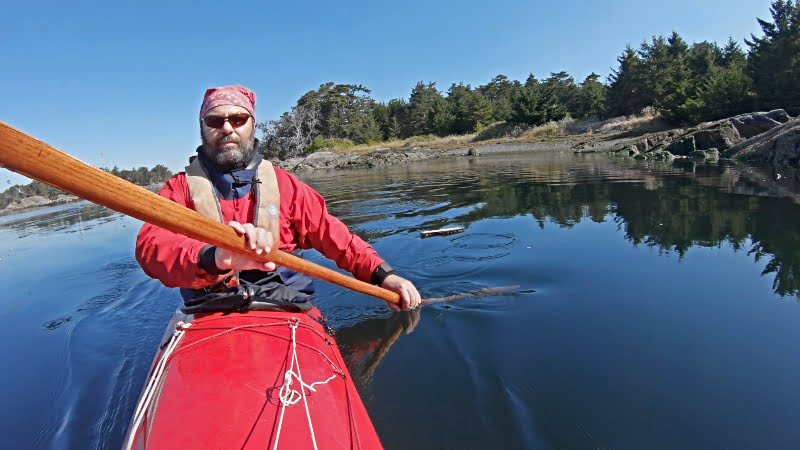
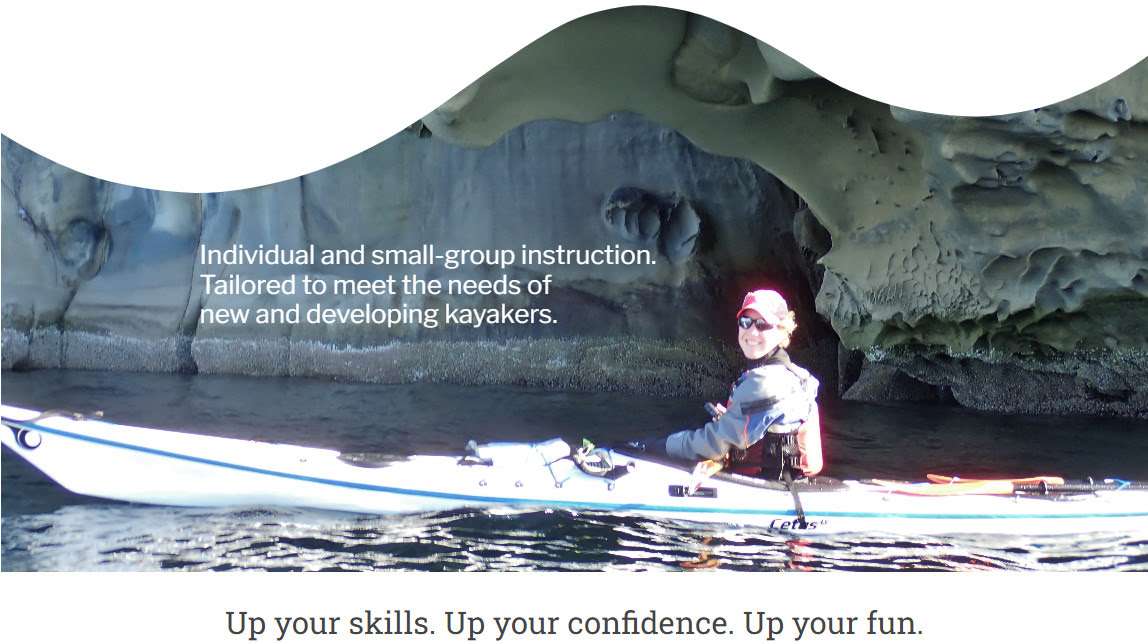
|